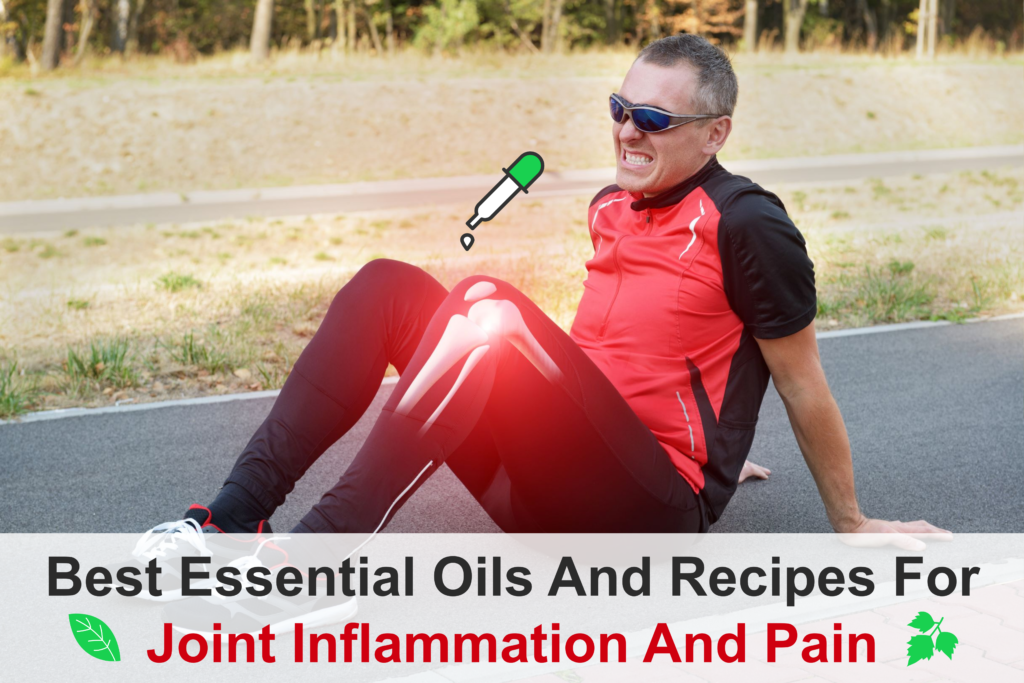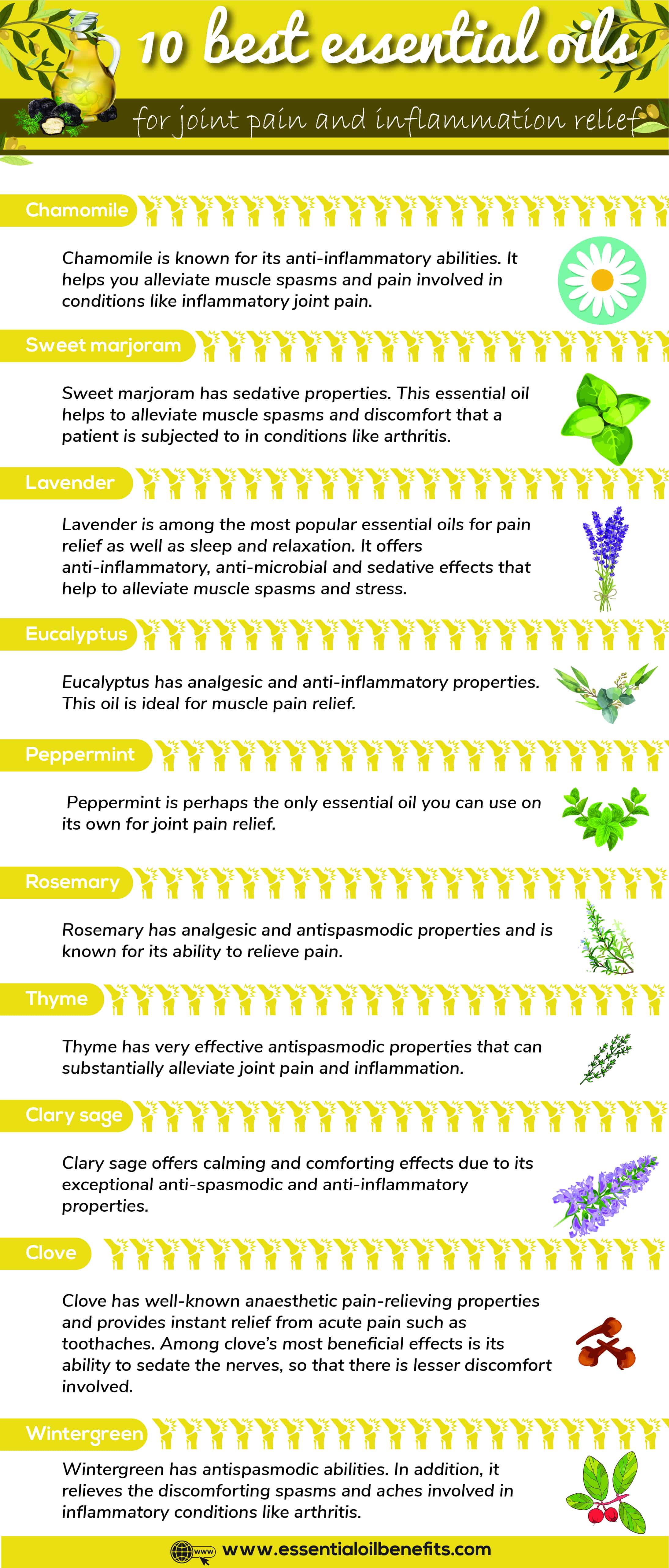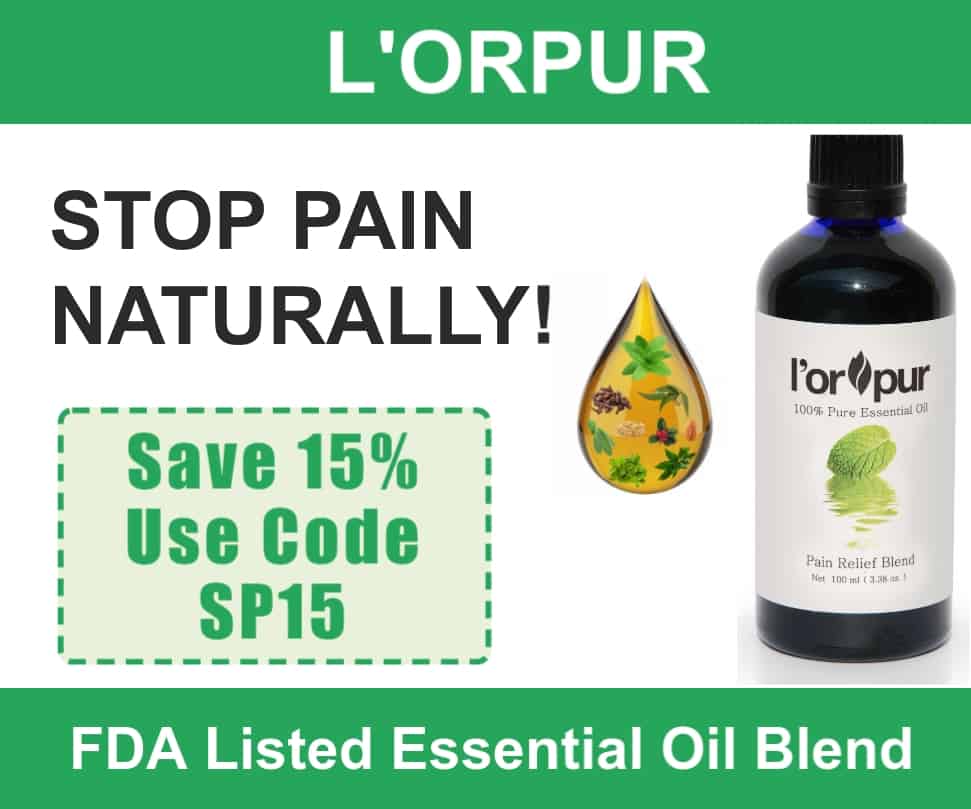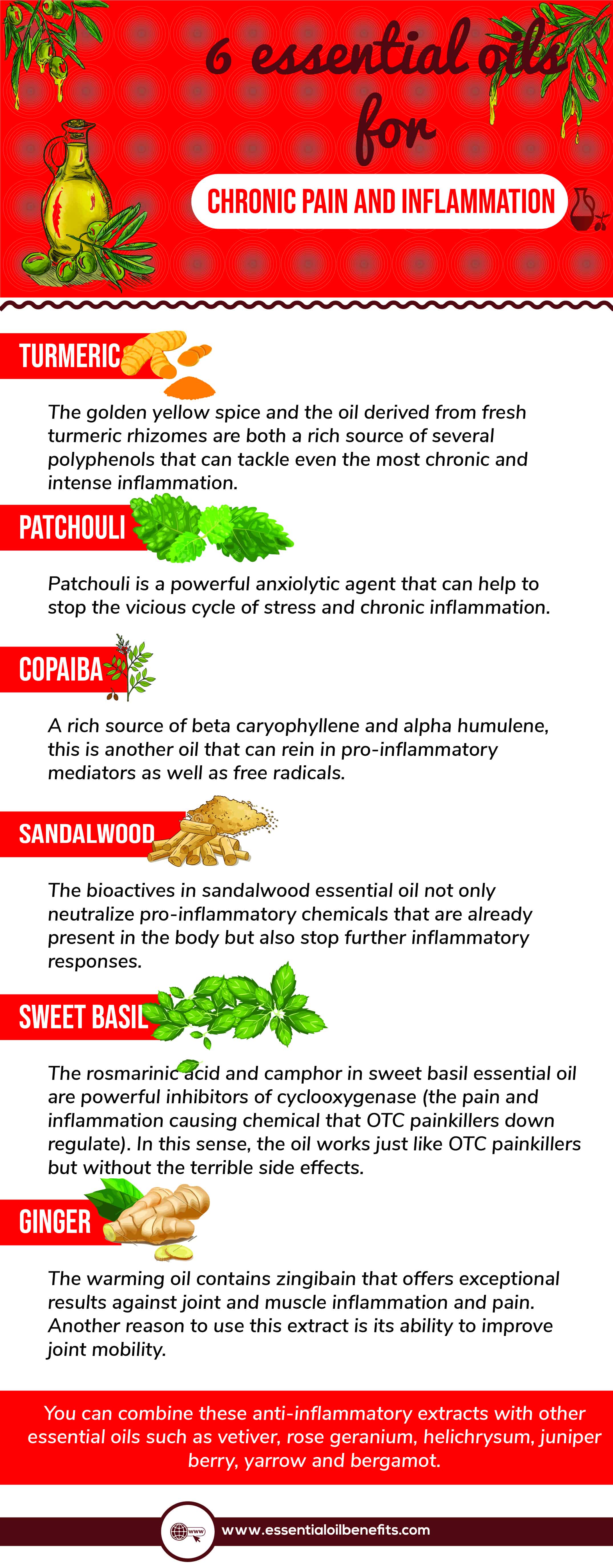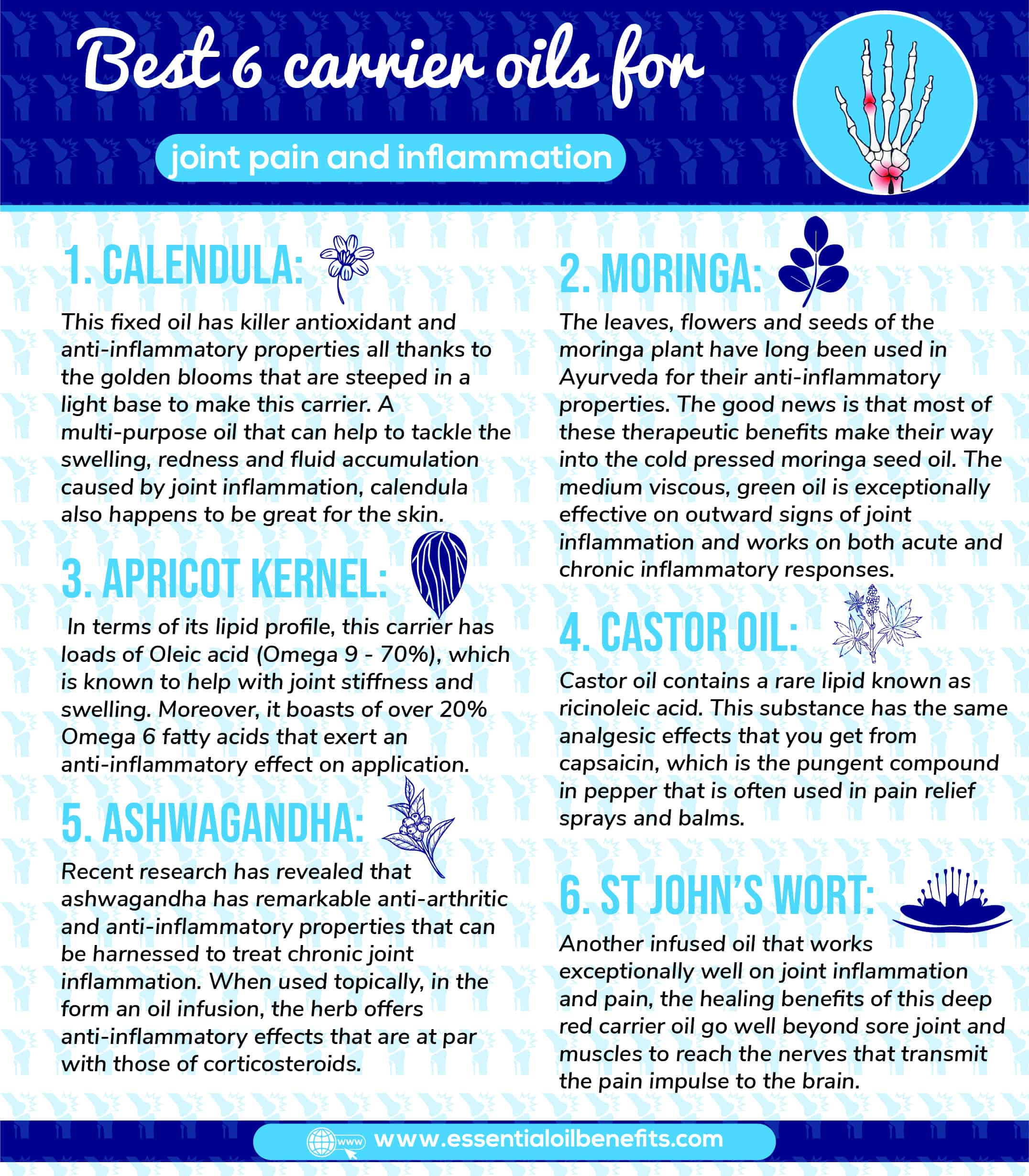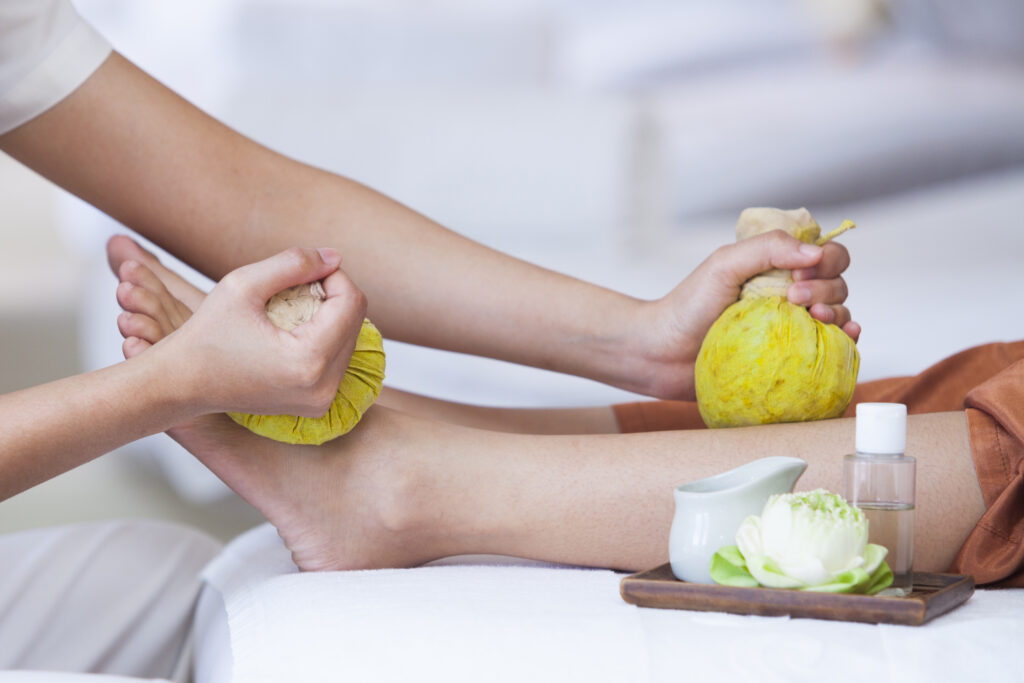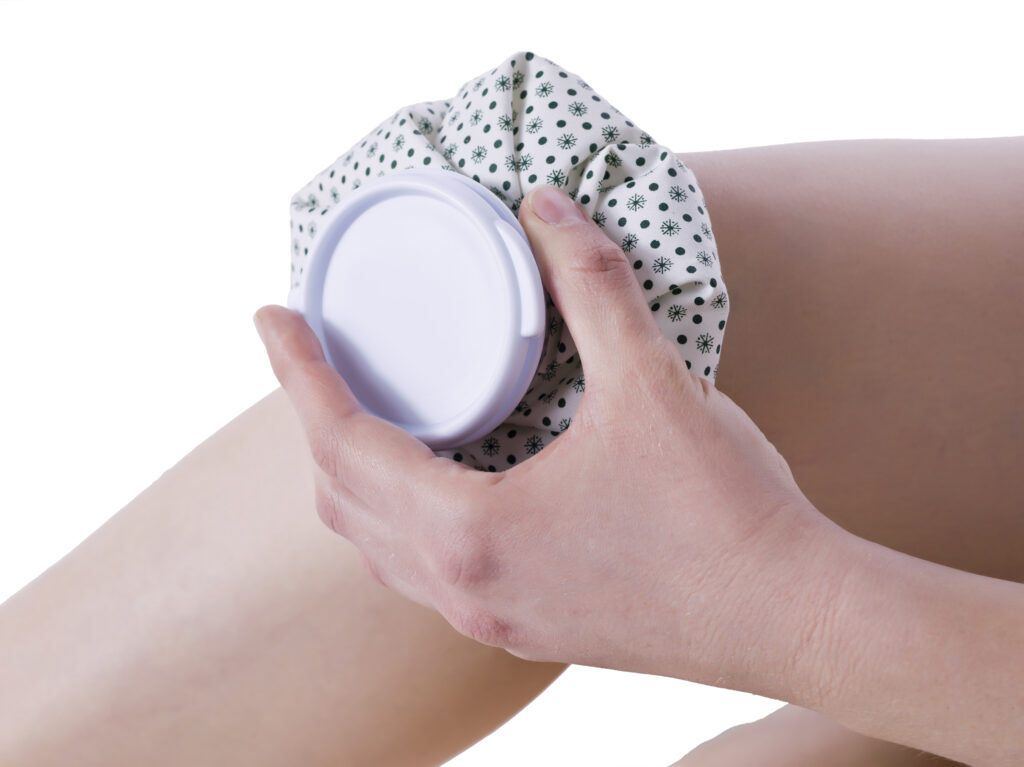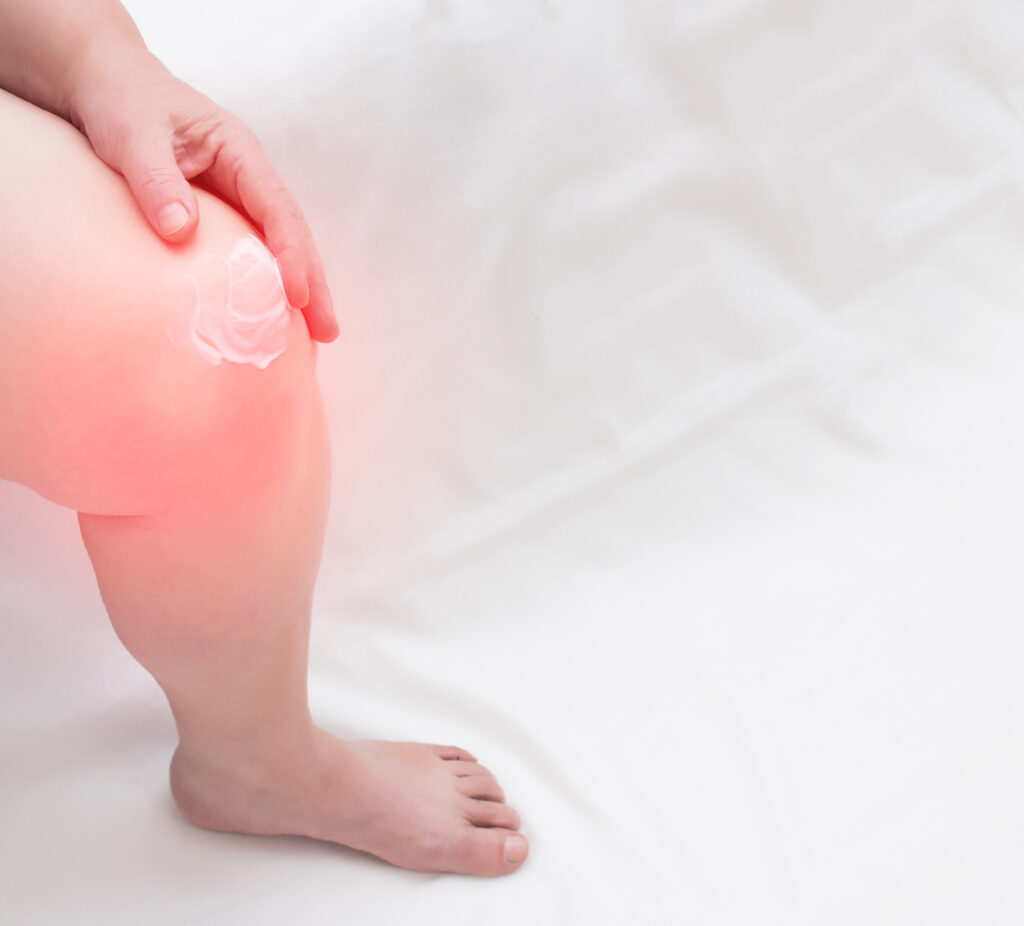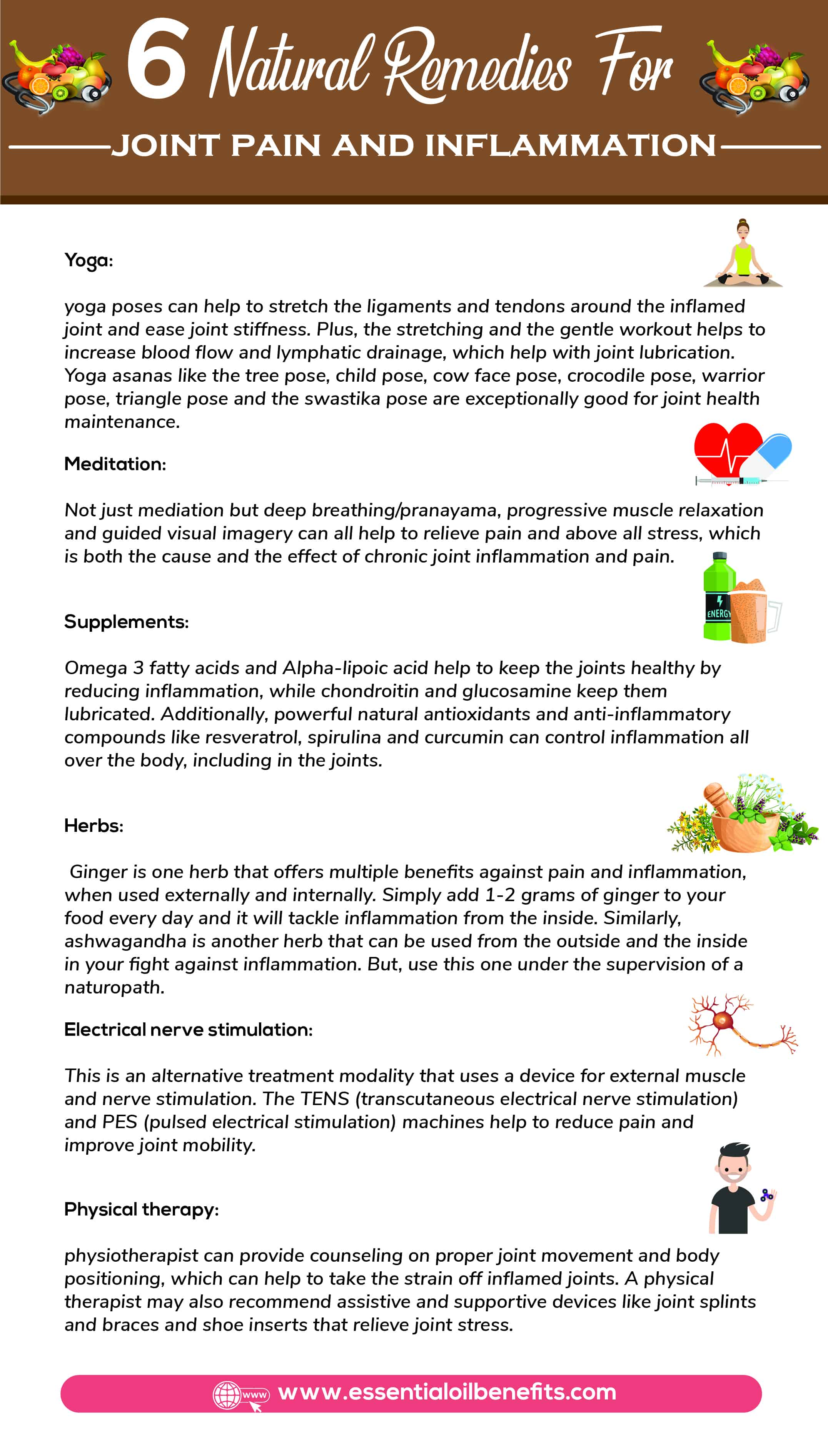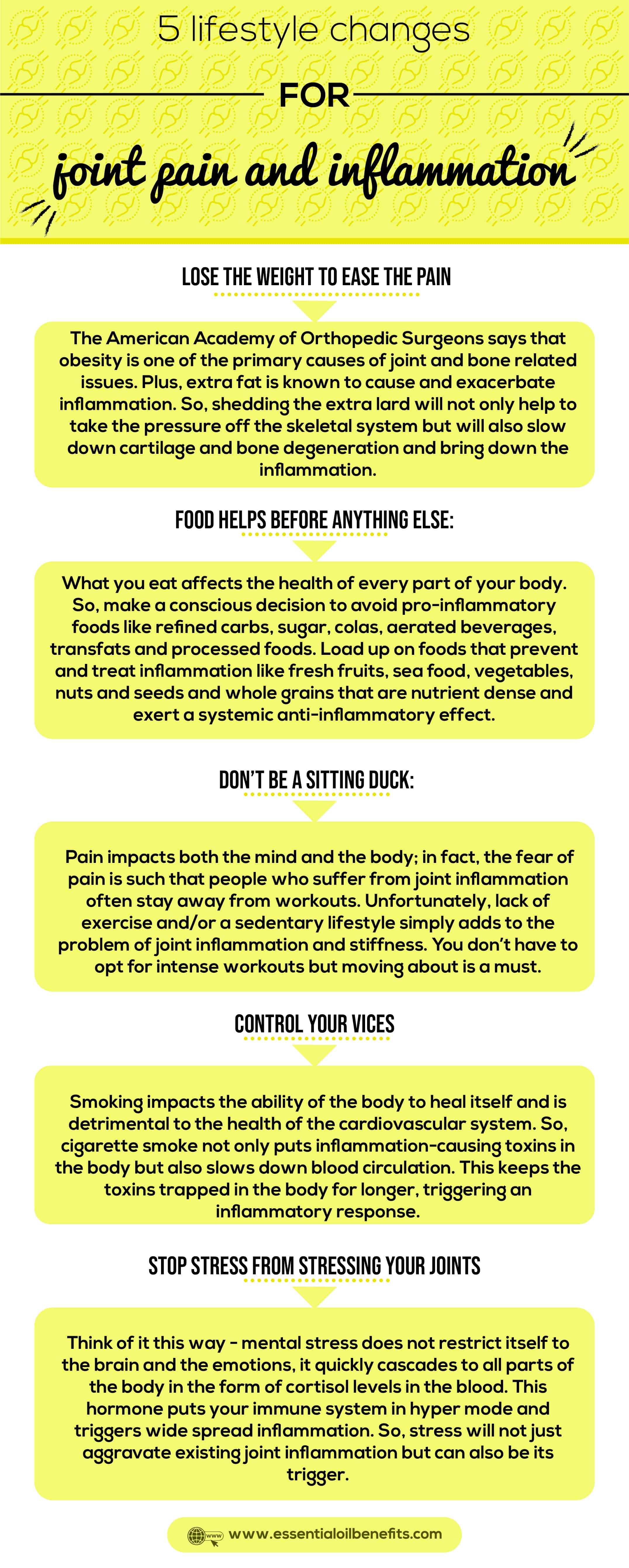Inflammation – where do I start? Such a broad topic…And it usually results from another health condition.
Changes to our food supplies, diets and lifestyles are creating a rare combination of circumstances that is further aggravating our crisis of inflammation.
Inflammation can cause a wide array of health problems, such as pain, migraines, neuropathy, obesity, ADD/ADHD, stroke, thyroid issues, diabetes, heart disease, and cancer.
Causes Of Joint Pain
Next – Joint pain? Sounds familiar…Again, a broad topic…caused by other health conditions. And it is not always arthritis and osteoarthritis that causes joint pain. Here are some other factors that can be the cause of joint pain.
1. Medication
Pills are there to “fix” you up, but unfortunately for some, the body can develop an inflammatory response as well as a severe reaction to medication. Rash on the body and acute and sudden joint pain are usually two of the initial signs of a severe allergic reaction.
2. Gout
Gout is a condition that affects more men than women. If you have gout, you’ll end up with inflammation in your joints. Generally, gout starts in the big toe and moves to other areas such as ankles and knees. Eating healthily, exercising regularly and avoiding alcohol are simple yet effective ways to avoid gout.
3. Lyme
There are certain types of ticks that can be the source of Lyme disease. If the bite is left unattended, it can spread all over your body in a couple of weeks. You can get a fever, headaches or start to experience joint pain.
4. Fibromyalgia
Fibromyalgia is a very common health issue that affects more women than men. The causes of the condition are not properly understood, but it is thought to be an inflammatory response to many factors including infections. You may also experience fatigue, headaches, anxiety and depression if you have fibromyalgia.
We’ll cover joint pain and inflammation in this article, a condition that currently affect 54 million people (or 15 percent of the current population) in the US alone. The scary part is that this number is expected to break through the 78 million mark by the year 2040.
What Makes Those Joints Go All Sore On You?
Most of us would associate joint pain and inflammation to conditions like arthritis. While this is true to some extent, inflammation is actually the temporary side effect of the process in which the body’s immune system, including proteins and white blood cells, strives to safeguard you from infections and foreign elements such as bacteria and viruses.
But often the immune system perceives a threat where there isn’t one. In other words, your body starts attacking itself. Such diseases, referred to as autoimmune disorders, cause the body’s defence mechanism to attack healthy tissues.
Joint pain and inflammation often result from autoimmune disorders. So, if you have not recently suffered from a joint injury but have some or all of the symptoms listed below, you may be dealing with an autoimmune disorder:
- Redness around the joint
- Swelling around the joint
- Joint discomfort
- Joint stiffness
- Loss of joint function
That said, whatever the cause of your chronic or acute joint inflammation, you are about to learn how to tackle the redness and swelling that results from inflammation as well as the pain, soreness and stiffness that arrive as an after effect of the inflammation.
To keep things simple, I have divided this article into three sections.
- The first section talks about how essential oils help with joint pain and inflammation and how you can use the healing power of these natural extracts to both prevent and treat joint discomfort.
- The second section is exclusively about joint pain, regardless of its cause. For instance, say you bumped your knee into the table or simply spent too much time hammering away at the keyboard and are now being rewarded with knee pain and stiffness, you can use the information and recipes in this section for quick relief from the pain.
- In the third section, I only discuss chronic joint inflammation that usually results from auto-immune disorders or degenerative joint ailments.
So, my dear Olive Nation, get ready to get rid of joint pain and inflammation, because after all, you are the boss of your body and not pain!
How Useful Are Essential Oils In Dealing With Joint Pain And Inflammation?
Several essential oils can be used to relieve the signs and symptoms of joint pain and inflammation, with each offering its own set of benefits, depending on its organic components.
Linalool and linalyl acetate are the two analgesic and anti-inflammatory ingredients that are often found in essential oils known to ease joint pain and inflammation.
The essential oils of bergamot and lavender have linalyl acetate in high amounts, and over 200 forms of plants produce linalool.
The pain and loss of mobility that commonly accompanies arthritis can trigger anxiety and depression. Lavender, bergamot, lemon, German chamomile and Roman chamomile all work as antidepressants.
In addition, the essential oils of rose geranium and frankincense can ease stress, which ultimately helps to alleviate both the mental and physical traumas of inflammatory joint pains.
Aromatherapy can likewise work as an adjunct to physical rehabilitation by stimulating blood flow through the joints, consequently offering the patient increased energy and the ability to cope with the pain and inflammation.
Why Massaging Essential Oils Onto The Inflamed Joints Is The Most Effective Way To Deal With Inflammation And Joint Pain?
Given that essential oils can easily be absorbed through into the skin, using them in massages is highly recommended. Massages will not only help you reduce pain, but it will also help ease spasms, tiredness and stress.
A massage will boost the flow of blood to the impacted location, which consequently helps improve lymph drainage, and warms the spot being rubbed. Rubbing generates heat that raises the rate of absorption of the essential oil. In addition, it allows the essential oils to evaporate letting the person inhale them too.
I have gladly incorporated massages into my everyday self-care regimen as a preventative measure so that issues like joint pain and inflammation do not develop. In addition, regular massage with essential oils will enhance your muscle mass, relax tight muscles and give your overall wellness a nice boost.
The Top 10 Best Essential Oils For Joint Pain Relief
1. Chamomile
Chamomile is known for its anti-inflammatory abilities. It helps you alleviate muscle spasms and pain involved in conditions like inflammatory joint pain.
2. Sweet marjoram
Sweet marjoram has sedative properties. This essential oil helps to alleviate muscle spasms and discomfort that patients are subjected to in conditions like arthritis.
3. Lavender
Lavender is among the most famous essential oils for pain relief as well as sleep and relaxation. It offers anti-inflammatory, anti-microbial and sedative effects that help to alleviate muscle spasms and stress.
4. Eucalyptus
Eucalyptus has analgesic and anti-inflammatory properties. It is ideal for muscle pain relief.
5. Peppermint
Peppermint is one of the few essential oil you can use on its own for joint pain relief.
6. Rosemary
Rosemary has analgesic and antispasmodic properties and is known for its ability to relieve pain.
7. Thyme
Thyme has very effective antispasmodic properties that can substantially alleviate joint pain and inflammation.
8. Clary sage
Clary sage offers calming and comforting effects due to its exceptional anti-spasmodic and anti-inflammatory properties.
9. Clove
Clove has well-known anaesthetic pain-relieving properties and provides instant relief from acute pain such as toothaches. Among clove’s most beneficial effects is its ability to sedate the nerves, so that there is lesser discomfort involved.
10. Wintergreen
Wintergreen has antispasmodic abilities. In addition, it relieves the discomforting spasms and aches involved in inflammatory conditions like arthritis.
Recommended Natural Product For Joint Pain & Inflammation
Most of the above essential oils are contained in my own proprietary blend of l’orpur pain relief, which is blended to perfection with two carrier oils, ready for your use.
You won’t need to purchase single individual essential oils or even learn how to blend essential oils. All done for you in a 100ml bottle and comes with both a dropper and a spray head for ease of application.
4 Essential Oil Recipes For Joint Pain And Inflammation Relief
Try making these blends at home and massage up to three times daily on the affected areas, such as aching or inflamed joints.
1. Essential oil bath blend for joint pain
- 1-2 cups bath salts
- 2 drops rosemary
- 3 drops cypress
- 4 drops lavender
- 2 drops wintergreen
Method:
Create a blend of bath salts by adding baking soda and Epsom salt in equal portions in a bathtub. If you have some sea salt, add a bit of that too!
Add the essential oils just after filling the bath tub with warm water; mix well. Soak yourself in this bath water for around 20 minutes.
2. A warming massage essential oil recipe for burning pain in joints
- 1 oz. apricot kernel or moringa oil (carrier oil)
- 2 drops black pepper (optional)
- 3 drops ginger
- 4 drops clove
- 3 drops rosemary
- 5 drops marjoram
- 3 drops bergamot
Method:
Blend the above-mentioned essential oils in a glass bottle, top up with the carrier oil of your choice and massage daily into legs, knees or any other aching joints.
I often refrain from using black pepper essential in cases of inflammatory arthritis, because of the fact that this oil warms the skin tissues. This could worsen the inflammation.
3. Essential oil blend for sore, inflamed joints
- 2 drops peppermint
- 2 drops lemon
- 5 drops eucalyptus
- 5 drops rosemary
- 6 drops lavender
- 1 oz. carrier oil (1:1 mix of castor oil and apricot kernel oil)
Method:
Add all oils to a glass bottle and mix thoroughly. Massage 8-10 drops of this blend on the location of the sore joint twice a day, for five days for significant reduction in joint inflammation.
4. Pain-relieving and gentle warming essential oil blend for swollen, stiff joints
- 1 oz. (30ml) grapeseed oil
- 4 drops juniper
- 4 drops geranium
- 5 drops German chamomile
- 3 drops thyme
- 2 drops frankincense
Method:
Add all essential oils to a glass bottle and add in the carrier oil; mix well. Gently massage a few drops of this blend onto the swollen area. Alternatively, get a full body massage using this blend from a qualified aromatherapist if you are experiencing stiff joints all over your body.
6 Best Essential Oils For Chronic Inflammation
1. Turmeric
The golden yellow spice and the oil derived from fresh turmeric rhizomes are both a rich source of several polyphenols that can tackle even the most chronic and intense inflammation.
Curcumin and other phytochemicals in this golden oil interfere with the nuclear factor kappa B pathway (NF-κB), which is responsible for the release of pro-inflammatory cytokines (inflammation causing proteins).
Because the oil plays a role in the down regulation of cyclooxygenase-2 and nitric oxide synthase (chemicals that trigger inflammation and pain), its mechanism of action is almost the same as that of OTC painkillers, but turmeric essential oil offers better results against both joint inflammation and pain.
Plus, the neuroprotective properties of the oil come in handy to tackle the stress and depression that eventually results from joint inflammation and pain.
2. Patchouli
You may/may not appreciate the earthy aroma of this oil, but the compounds that lend this extract its distinctive fragrance also boast of extraordinary anti-inflammatory effects.
The combination of patchouli alcohol, beta caryophyllene, beta patchoulene and alpha humulene in the oil work against almost all pro-inflammatory mediators. Moreover, patchouli is a powerful anxiolytic agent that can help to stop the vicious cycle of stress and chronic inflammation.
3. Copaiba
A rich source of beta caryophyllene and alpha humulene, this is another oil that can rein in pro-inflammatory mediators as well as free radicals. Furthermore, copaiba essential oil also exhibits potent local anesthetic effects by working on both the central and peripheral nervous system.
But the best part is that if you have been taking NSAIDs for joint inflammation, this oil can help to attenuate the liver damage caused by these drugs.
4. Sandalwood
Yes, this oil is a bit expensive, but its anti-inflammatory action is totally worth the price. The bioactives in sandalwood essential oil not only neutralize pro-inflammatory chemicals that are already present in the body but also stop further inflammatory responses.
And if that is not enough, the woody, sweet and earthy aroma of the oil has an invigorating effect on the brain while topical application of the oil soothes the mind and the body. How’s that for twice the bang for your buck?
5. Sweet basil
This may seem like an unlikely addition to this list, but a closer look at the major constituents of the extract will explain its anti-inflammatory potential.
The rosmarinic acid and camphor in this oil are powerful inhibitors of cyclooxygenase (the pain and inflammation causing chemical that OTC painkillers down regulate). In this sense, the oil works just like OTC painkillers but without the terrible side effects.
Another big difference is that sweet basil essential oil is also a potent circulatory stimulant and antioxidant. These properties help to stop free radicals from damaging the joints and aid in the faster removal of metabolic wastes that can augment and even trigger inflammatory responses.
6. Ginger
The therapeutic benefits of this oil have been used for thousands of years and for good reason. The warming oil contains zingibain that offers exceptional results against joint and muscle inflammation and pain.
Another reason to use this extract is its ability to improve joint mobility. Plus, the warming effect of the oil helps to keep pain in check. The analgesic effects of ginger essential oil can be used to keep the joints moving with light exercise. Low intensity workouts help to maintain joint health and increase lubrication and hydration in the area.
You can combine these anti-inflammatory properties with other essential oils such as vetiver, rose geranium, helichrysum, juniper berry, yarrow and bergamot.
Best Carrier Oils For Joint Pain And Inflammation
While essential oils have complex chemistry, carrier oils are a simple mix of micronutrients and fatty acids. Yet, the right carrier oil can go a long way in improving the efficacy of essential oils. So, here are some of the best carrier and infused oils that you can use for joint inflammation.
1. Calendula
This fixed oil has killer antioxidant and anti-inflammatory properties all thanks to the golden blooms that are steeped in a light base to make this carrier.
A multi-purpose oil that can help to tackle the swelling, redness and fluid accumulation caused by joint inflammation, calendula also happens to be great for the skin.
2. Moringa
The leaves, flowers and seeds of the moringa plant have long been used in Ayurveda for their anti-inflammatory properties. The good news is that most of these therapeutic benefits make their way into the cold pressed moringa seed oil.
The medium viscous, green oil is exceptionally effective on outward signs of joint inflammation and works on both acute and chronic inflammatory responses.
3. Apricot kernel
A light oil that is rich in antioxidants and micronutrients, this carrier gets absorbed into the skin rapidly and transports the bioactives from essential oils deep into the dermal layers from where they can be picked up by the circulatory system.
In terms of its lipid profile, this carrier has loads of Oleic acid (Omega 9- 70%), which is known to help with joint stiffness and swelling. Moreover, it boasts of over 20% Omega 6 fatty acids that exert an anti-inflammatory effect on application.
4. Castor oil
Most of us know this extract as the awful but effective laxative, but this viscous oil can do a lot more than make the train come out of the tunnel easy.
Castor oil contains a rare lipid known as ricinoleic acid. This substance has the same analgesic effects that you get from capsaicin, which is the pungent compound in pepper that is often used in pain relief sprays and balms.
This ricinoleic acid is a non-irritating, pain reliever and anti-inflammatory agent. Plus, it is a circulatory and lymphatic stimulant. So, castor oil is not only effective against existing joint inflammation and pain but can also curb pro-inflammatory responses that are a part of chronic inflammatory and degenerative joint ailments.
5. Ashwagandha
Known as Indian ginseng, this herb is used to treat a myriad of health problems in the Ayurvedic Treatment System of India.
Recent research has revealed that ashwagandha has remarkable anti-arthritic and anti-inflammatory properties that can be harnessed to treat chronic joint inflammation.
Even when used topically, in the form an oil infusion, the herb offers anti-inflammatory effects that are at par with those of corticosteroids. Ashwagandha macerated oil help to lower swelling and redness on the outside and on the inside it works towards neutralizing pro-inflammatory mediators, thus offering rapid relief from pain due to joint inflammation.
6. St John’s wort
Another infused oil that works exceptionally well on joint inflammation and pain, the healing, anti-stress and anti-depressive benefits of this deep red carrier oil go well beyond sore joint and muscles to reach the nerves that transmit the pain impulse to the brain.
This oil infusion not only helps to treat inflammation but also checks the risk of permanent cartilage damage due to oxidative stress. Its regenerative properties and local anesthetic effect help to deal with both the inflammation and its cause.
Anti-Inflammatory Essential Oil Recipes
1. Warm compress: For joint inflammation and stiffness
- ½ cup Epsom salt
- ½ cup sea salt/Himalayan pink salt
- 1 tsp green tea (green tea leaves)
- A large salad bowl filled with hot water (not boiling hot)
- A face wash cloth
- 3 drops vetiver
- 4 drops ginger
- ½ tsp milk (plant or dairy)
Method:
Mix the essential oils with ½ tsp of milk or any carrier oil and set the blend aside. Fill a large salad bowl with hot water and add the salts and green tea leaves to it. Stir briskly and then pour in the essential oil blend. Whisk the water and then soak a face wash cloth in it. Remove the cloth and wring and wrap it around the inflamed joint.
Keep the cloth in place till it cool, usually about a minute. Remove and repeat. After 4-5 rounds of this, you can wrap the cloth around the joint one last time, cover it with a dry towel and place a heating pad on it for 5-10 minutes. The goal is to warm the inflamed and aching joint for 15-20 minutes. If you get that much time from the hot water, you don’t have to use the heating pad.
2. Cold compress – For joint inflammation, soreness and pain
- ½ cup seal salt/ Himalayan pink salt
- A large salad filled with ice cubes and water
- ½ tsp milk
- 3 drops peppermint
- 5 drops rose geranium
- 4 drops bergamot
Method:
Preparation and treatment as above, but instead of hot water and a heating pad, you will be using ice-cold water and a bag of frozen peas. You can alternate between warm and cold compresses, using a warm compress in the morning and this cold compress at night.
3. Poultice: For severe joint inflammation and pain
For the poultice
- 1 tsp ginger powder
- 1 tsp ashwagandha powder
- 1 tsp matcha
- ¼ tsp nutmeg powder (leave out for sensitive skin)
- ½ tsp licorice root powder
- 2 tbsp orange or lemon peel powder
- 1 cup honey
For the Essential Oil blend
- 10 drops turmeric
- 5 drops each of sweet basil, peppermint and copaiba
- 7 drops eucalyptus and sandalwood
- 30 ml ashwagandha/calendula macerated oil
Remove the required quantity of the powders into a dry bowl and mix them together with a dry spoon. Add honey to this dry mix and whisk till you get a lump-free paste with the consistency of toothpaste. Store the mixture in a glass bottle.
As long as you don’t introduce moisture into the bottle, the paste will remain good for 6-9 months. Store under cool and dry conditions but there is no need to refrigerate it.
The oils have to be mixed separately. Simply pour the carrier and the essential oils into a small bowl and mix well with a glass stirrer, toothpick or chopstick. Remove the blend into a dark colored glass bottle.
To use, add 10 drops of the blend to 1 tbsp of the paste. Mix about a teaspoon or two of water to make it easier to spread the paste on the skin. Heat the paste in the microwave for 10-15 seconds.
Apply on the severely inflamed joint in a thick layer. You can apply this poultice on any joint as long as there isn’t an open wound in the area.
Spread the paste on the sore joint as well as in the surrounding areas. Wrap lightly with a gauze bandage and then cover with cling film and let the poultice work on the inflammation through the night. In the morning, wash off the paste with warm water.
4. Inflammation-control bar: To stop joint inflammation and pain before it starts
- 50 ml cup kokum butter
- 30 ml each ashwagandha, calendula and St. John’s wort macerated oils
- 10 drops each of copaiba and sweet basil
- 15 drops each of turmeric and ginger
- 5 drops clove
- 12 drops each of German chamomile and patchouli
Method:
Melt the plant butter in a double boiler and once it’s in a liquid state add the carrier oils to it. Whisk the lipids and then remove from heat. Wait for a minute and add the essential oils to the mixture of carrier oils. Allow the blend to cool for 2-3 minutes till it gets hazy. Next, use a handheld blender or a wire whisk to mix the oils together.
Allow it to cool for another 2-3 minutes and again, whisk for about a minute. Then, pour into silicon soap moulds. Personally, I like to use empty deodorant stick containers. When you want to use, simply rub the bar/roll-up stick on the inflamed joint. Massage gently for about 2-3 minutes and you will be done.
Natural Treatment / Therapies For Joint Inflammation And Pain
1. Yoga
Calming yoga poses can help to stretch the ligaments and tendons around the inflamed joint and ease joint stiffness. Plus, the stretching and the gentle workout helps to increase blood flow and lymphatic drainage, which help with joint lubrication.
Yoga asanas like the tree pose, child pose, cow face pose, crocodile pose, warrior pose, triangle pose and the swastika pose are exceptionally good for joint health maintenance.
2. Meditation
I bet you are wondering why I have included meditation in this list.
Well, not just mediation but deep breathing / pranayama, progressive muscle relaxation and guided visual imagery can all help to relieve pain and above all stress, which is both the cause and the effect of chronic joint inflammation and pain.
3. Supplements
Omega 3 fatty acids and Alpha-lipoic acid help to keep the joints healthy by reducing inflammation, while chondroitin and glucosamine keep them lubricated.
Additionally, powerful natural antioxidants and anti-inflammatory compounds like resveratrol, spirulina and curcumin can control inflammation all over the body, including in the joints.
Of course, vitamin D and calcium are integral for bone and joint health, but consult your doctor before supplementing with these nutrients. You may also want to try SAMe, which follows the same pain relieving mechanism as ibuprofen, but is safer.
4. Herbs
Ginger is one herb that offers multiple benefits against pain and inflammation, when used externally and internally. Simply add 1-2 grams of ginger to your food every day and it will tackle inflammation from the inside.
Similarly, ashwagandha is another herb that can be used from the outside and the inside in your fight against inflammation. But, use this one under the supervision of a naturopath.
5. Electrical nerve stimulation
This is an alternative treatment modality that uses a device for external muscle and nerve stimulation.
The TENS (transcutaneous electrical nerve stimulation) and PES (pulsed electrical stimulation) machines help to reduce pain and improve joint mobility.
6. Physical therapy
A physiotherapist can provide counseling on proper joint movement and body positioning, which can help to take the strain off inflamed joints.
A physical therapist may also recommend assistive and supportive devices like joint splints and braces and shoe inserts that relieve joint stress.
Lifestyle Changes For Joint Inflammation And Pain
1. Lose the weight to ease the pain
The American Academy of Orthopedic Surgeons says that obesity is one of the primary causes of joint and bone related issues. Plus, extra fat is known to cause and exacerbate inflammation.
So, shedding the extra lard will not only help to take the pressure off the skeletal system but will also slow down cartilage and bone degeneration and bring down the inflammation.
2. Food helps before anything else
What you eat affects the health of every part of your body. So, make a conscious decision to avoid pro-inflammatory foods like refined carbs, sugar, colas, aerated beverages, transfats and processed foods.
Load up on foods that prevent and treat inflammation like fresh fruits, sea food, vegetables, nuts and seeds and whole grains that are nutrient dense and exert a systemic anti-inflammatory effect.
3. Don’t be a sitting duck
Pain impacts both the mind and the body; in fact, the fear of pain is such that people who suffer from joint inflammation often stay away from workouts.
Unfortunately, lack of exercise and/or a sedentary lifestyle simply adds to the problem of joint inflammation and stiffness. You don’t have to opt for intense workouts but moving about is a must.
It can be something as simple as a 20-minute walk once a day or water aerobics or cycling. The idea is to keep the joints healthy and lubricated by keeping them functional.
Yes, there will be days when you will have to go particularly slow, like when you have a flare-up of joint inflammation and pain. But bed rest is not needed and is, in fact, contraindicated.
4. Control your vices
Smoking impacts the ability of the body to heal itself and is detrimental to the health of the cardiovascular system.
So, cigarette smoke not only puts inflammation-causing toxins in the body but also slows down blood circulation. This keeps the toxins trapped in the body for longer, triggering an inflammatory response.
Moreover, neck and back pain can be aggravated by the respiratory issues caused by smoking.
As far as alcohol is concerned, drinking too much or daily drinking can cause dehydration and lower joint lubrication. Furthermore, alcohol can increase uric acid levels in the joints, causing inflammation and pain.
5. Stop stress from stressing your joints
Think of it this way – mental stress does not restrict itself to the brain and the emotions, it quickly cascades to all parts of the body in the form of cortisol levels in the blood.
This hormone puts your immune system in hyper-mode and triggers widespread inflammation. So, stress will not just aggravate existing joint inflammation but can also be its trigger.
Precautions To Take When You Have Joint Inflammation
1. Vain shoes can cause joint pain
High heeled shoes look great, but they are terrible for joint health. In fact, any kind of footwear that does not reduce stress on the legs and the joints will cause inflammation and pain. Talk to your doctor about using cushioned insoles and the right type of shoes that can give your ankles and knees all the TLC they need.
2. Falling isn’t good for anybody
Inflamed joints increase the risk of falls and injuries. So, play it safe and use handrails on stairways and sturdy chairs, foot stools and ladders to prevent the risk of falls.
3. Go easy on your joints
If you suffer from joint inflammation, high impact workouts are not for you. The last thing you want to do is add external injury to insult that your joints are taking from pro-inflammatory mediators.
Keep those joints moving but don’t overdo things. Deep squats, lunges, heavy weight training, etc. can stress the knees and worsen joint inflammation in the legs.
4. Shortchanging your sleep won’t help
Eight hours of shuteye is not just necessary to feel good but also to keep the immune system working as it should.
Sleep deprivation is the fastest way to trigger inflammation in the body. So, if you are already battling joint inflammation, getting your zzz’s is quintessential.
The Final Word
Essential oils have been used since time immemorial. They are nature’s best and very effective at addressing various health ailments. People who use them heal more quickly than others.
This article has covered the essential oils, recipes, natural remedies and lifestyle changes that could help you relieve joint inflammation and pain, so why wait, go ahead and make yourself one of the above recipes.

